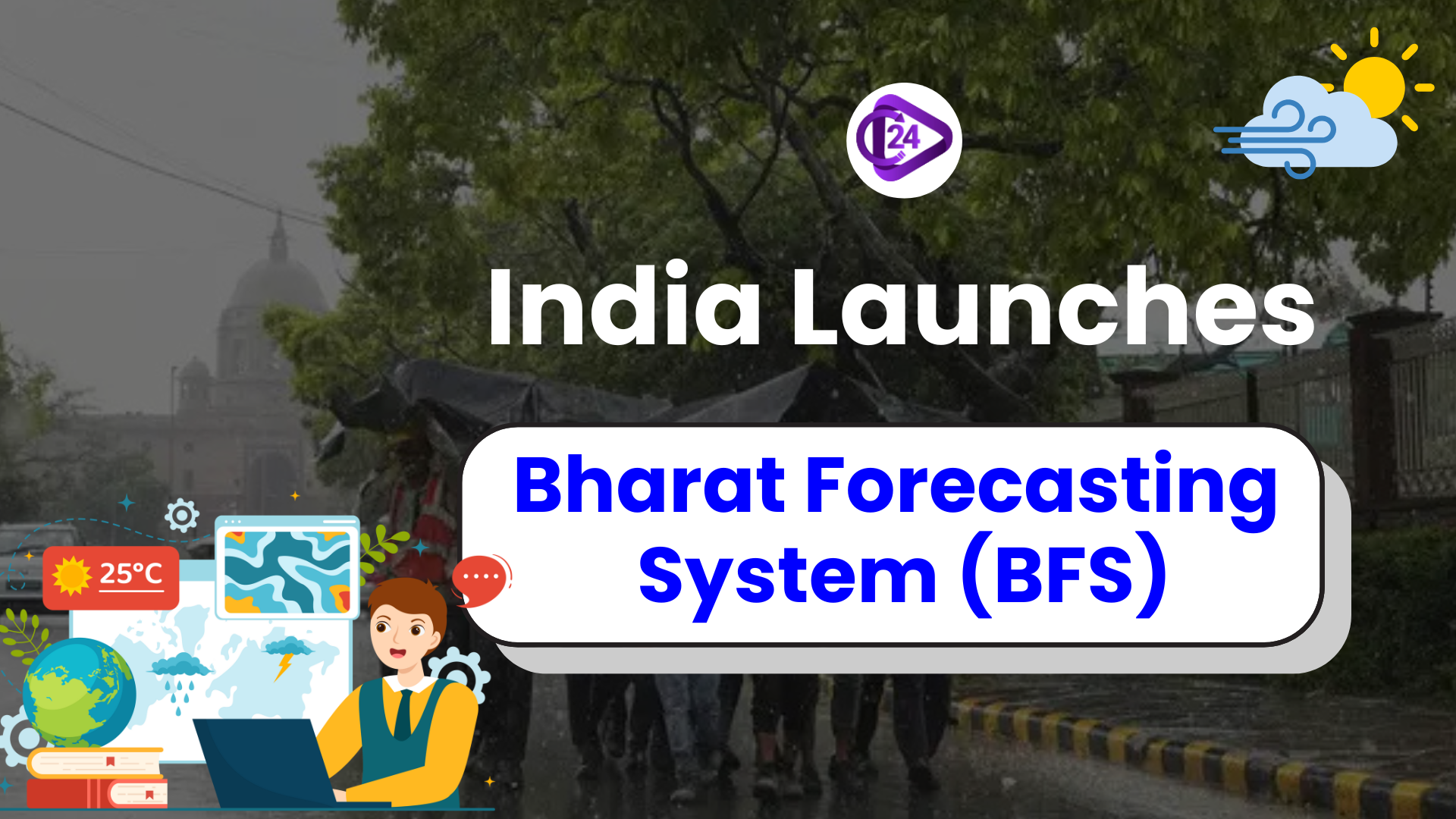
IITM Pune, together with the Bharat Forecasting System (BFS) spearheaded by Arka, introduced the system on May 26, 2025, changing the face of meteorology in India. The high-resolution BFS forecasts at a scale of 6 km x 6 km exceed those of global models, making it easier for India to address disasters, aid farming, and secure public safety.
Context
-
Bharat Forecasting System (BFS) is the world’s leader in 6 km weather data forecasts made possible by Arka, India’s fastest supercomputer.
-
This progress helps improve the prediction of weather conditions at the local level, helping to reduce dangers from disasters and divide resources wisely.
Key Points
-
Initial Launch and the Development of the Game:
-
The BFS was founded by Dr. Jitendra Singh, Union Earth Sciences Minister, with assistance from the Ministry of Earth Sciences and the Indian Institute of Tropical Meteorology (IITM), Pune.
-
-
Technological Backbone:
-
Because BFS runs on the supercomputer Arka, 4 hours are now needed for data processing instead of the previous 10 hours.
-
-
Forecast Resolution:
-
BFS uses a 6 km x 6 km grid, which is twice as precise as earlier Indian climate models and better than European, U.S., and UK models (9 to 14 km).
-
-
Nowcasting with Radar Technology:
-
At present, the system can nowcast within the next two hours by analyzing data from 40 Doppler radars, hoping to add data from an additional 60 radars.
-
-
Coverage:
-
The system is reliable in tropical regions located between 30 degrees north and 30 degrees south, including all of India’s mainland.
-
-
Applications:
-
Better methods of dealing with disasters and getting early warnings
-
Precision agriculture and advice for farmers
-
Plans and actions for managing water resources
-
Public safety and planning for cities
-
-
Global Context:
-
India’s BFS means that Indian weather forecasts now have better details than anywhere else globally, which lifts India’s ranking in weather research on an international scale.
-
Conclusion:
Bharat Forecasting System was launched to greatly enhance India’s meteorological abilities, making it possible to produce the best weather forecasts worldwide. With this system, India can handle climate challenges, maintain good agricultural outcomes, and look after its people, mirroring India’s success in scientific and technological progress.



 Third Edition of 'Unmesha: International Literature Festival' to be organised in Patna
Third Edition of 'Unmesha: International Literature Festival' to be organised in Patna Mithun Manhas Elected 37th BCCI President
Mithun Manhas Elected 37th BCCI President First India-born cheetah set to reach adulthood in Kuno National Park
First India-born cheetah set to reach adulthood in Kuno National Park New Finless Snake Eel Species Apterichtus kanniyakumari Discovered off Tamil Nadu Coast
New Finless Snake Eel Species Apterichtus kanniyakumari Discovered off Tamil Nadu Coast 71st National Film Awards 2025: Shah Rukh, Rani & Arijit Singh Shine
71st National Film Awards 2025: Shah Rukh, Rani & Arijit Singh Shine Sai Pallavi, Anirudh, S.J. Suryah to Receive Kalaimamani Awards
Sai Pallavi, Anirudh, S.J. Suryah to Receive Kalaimamani Awards Bihar Governor Arif Mohammad Khan Inaugurates International Literature Festival 'Unmesh' in Patna
Bihar Governor Arif Mohammad Khan Inaugurates International Literature Festival 'Unmesh' in Patna Why Bihar Congress is Protesting the Adani Project: A Breakdown
Why Bihar Congress is Protesting the Adani Project: A Breakdown Education Ministry to Hold Virtual Buildathon Contest for Students from Classes 6 to 12
Education Ministry to Hold Virtual Buildathon Contest for Students from Classes 6 to 12 System for Pension Administration – Raksha (SPARSH)
System for Pension Administration – Raksha (SPARSH)






